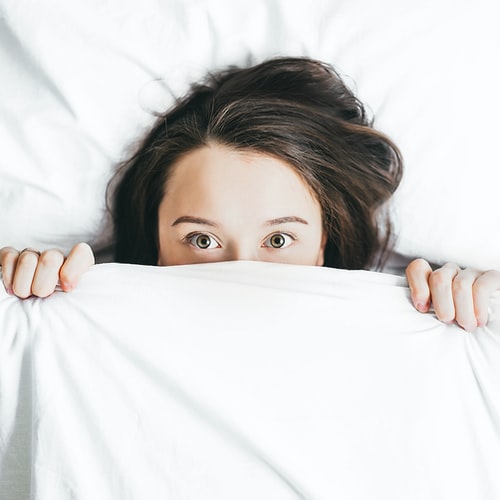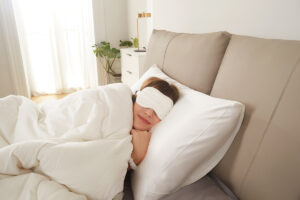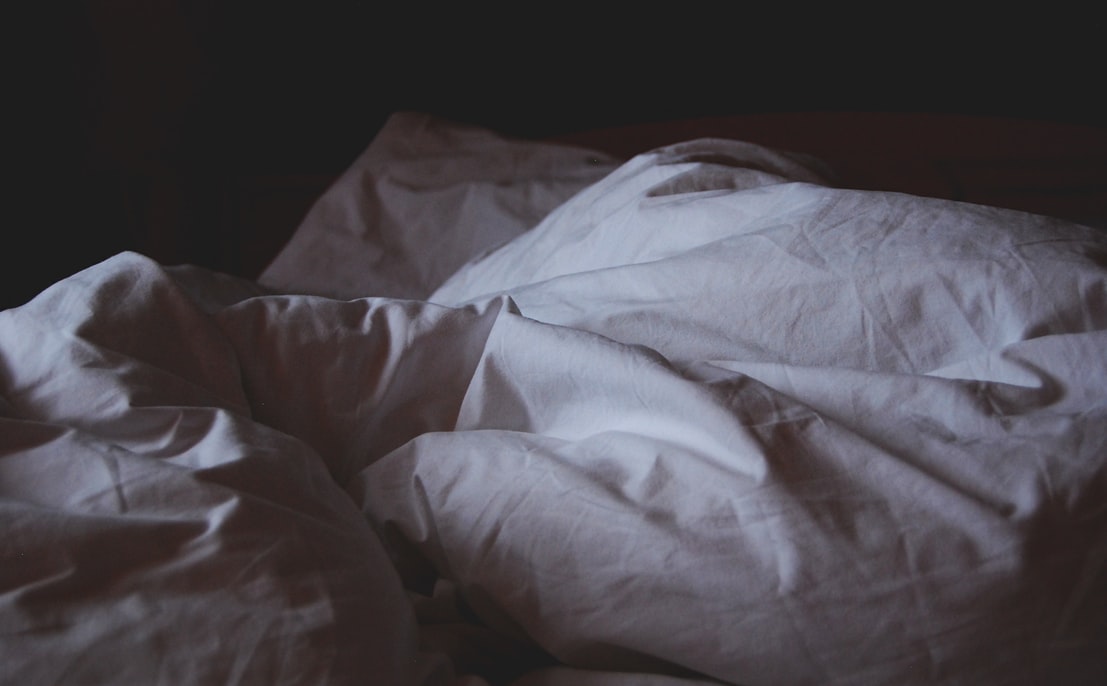
Alexandra Gorn | Unsplash
Falling asleep is half the battle. There are endless tips to help yourself fall asleep, like exercise, CBD, white noise machines, or even comfy socks. Once you fall asleep, your good night’s rest can be ruined by sleeping in the wrong position.
While you may toss and turn during the night, by choosing your initial sleeping position, you can try to train your body to fall into a different sleep position to help improve your aches and pains. By using sleeping tracker technology, or simply just listening to your body, you may find that you’re sleeping in a position that does more harm than good. Your sleeping position may need to alter throughout your life based on your circumstances: age, pregnancy, heartburn, snoring, or body aches. By knowing the advantages and disadvantages of each sleeping position, you can choose a sleeping position to best improve your sleep.
Sleeping on your side
Most adults find themselves sleeping on their sides.
You can maximize the benefits and improve the associated problems by customizing your side-sleeping position. If you experience acid reflux, sleeping on your left side, and adding an incline to your sleep set-up can help improve your symptoms. If you experience soreness from sleeping on your side, a side sleeper pillow can help relieve pressure and help you sleep in a more comfortable position.
Unfortunately, sleeping on your side can contribute to cosmetological aging, as it can cause wrinkles. As your face is repeatedly pressed against the pillow, the repeated lines from “smushing” your face against on the pillow can lead to wrinkles. Silk or satin pillowcases can help alleviate these wrinkles.
Fetal position
The fetal position is when you sleep on your side with bent legs–shaped like the letter “S.”
If you are experiencing lower back pain, sleeping in the fetus position can help improve your aches and soreness. As a frequent sufferer of lower back pain, pregnant women can benefit from sleeping in the fetus position.
However, if you sleep in the fetus position, be aware of how tight you curl into your body. Holding your body too tight can create soreness in your joints. Too tight of a curl can also restrict your ability to practice deep breathing in your resting hours. Try to sleep in a longer “S” shape rather than a curled, tight “S” shape.

As your airways are kept open while you’re sleeping on your side, this can be helpful for those who experience snoring or sleep apnea. Sleeping on your side can also help to aid digestion, or provide acid reflux relief while you sleep.
Lingsilk silk pillowcase, with soft, smooth and breathable fabric, lightly fitting the face, is the best choice for sleeping, which can reduce friction to facial skin. Plus, it would not be too hot because of the material with a steady temperature of fabric, protecting you from waking up by the pillow overheating.
Sleeping on your back
Sleeping on your back can be the most beneficial sleeping position. Gravity works to align your body without the added curves of sleeping on your side. As you sleep on your back with your spine straightened, gravity allows for equal alignment without creating unnecessary pressures.
Lying on your back can help avoid facial wrinkles. Since your face is not pressed against your pillow, you are able to let your face breathe and keep your skin looking fresh.
However, if you experience snoring or sleep apnea, sleeping on your back can worsen these conditions. Additionally, sleeping on your back can be problematic for those who experience heartburn or acid reflux.
Sleeping on your stomach
For those who snore, sleeping on your stomach can help reduce snoring. Sleeping on your stomach can also be beneficial for those with sleep apnea.
Be aware that sleeping on your back can lead to neck and back pain. As you rest on your stomach, you may experience muscle and joint pains when you wake up. If you notice repeated muscle or joint pain upon waking up in the morning, you may want to try switching up your sleeping position.

Krista Mangulosone | Unsplash
Sleep is so important to how we face the day. Even if you are receiving your 7 to 8 hours of recommended sleep, you are able to maximize your sleep by choosing the right position for your body’s needs. Additional remedies, such as a white noise machine, sleeping tracker technology, and black out shades, can help you make the perfect sleeping environment.
